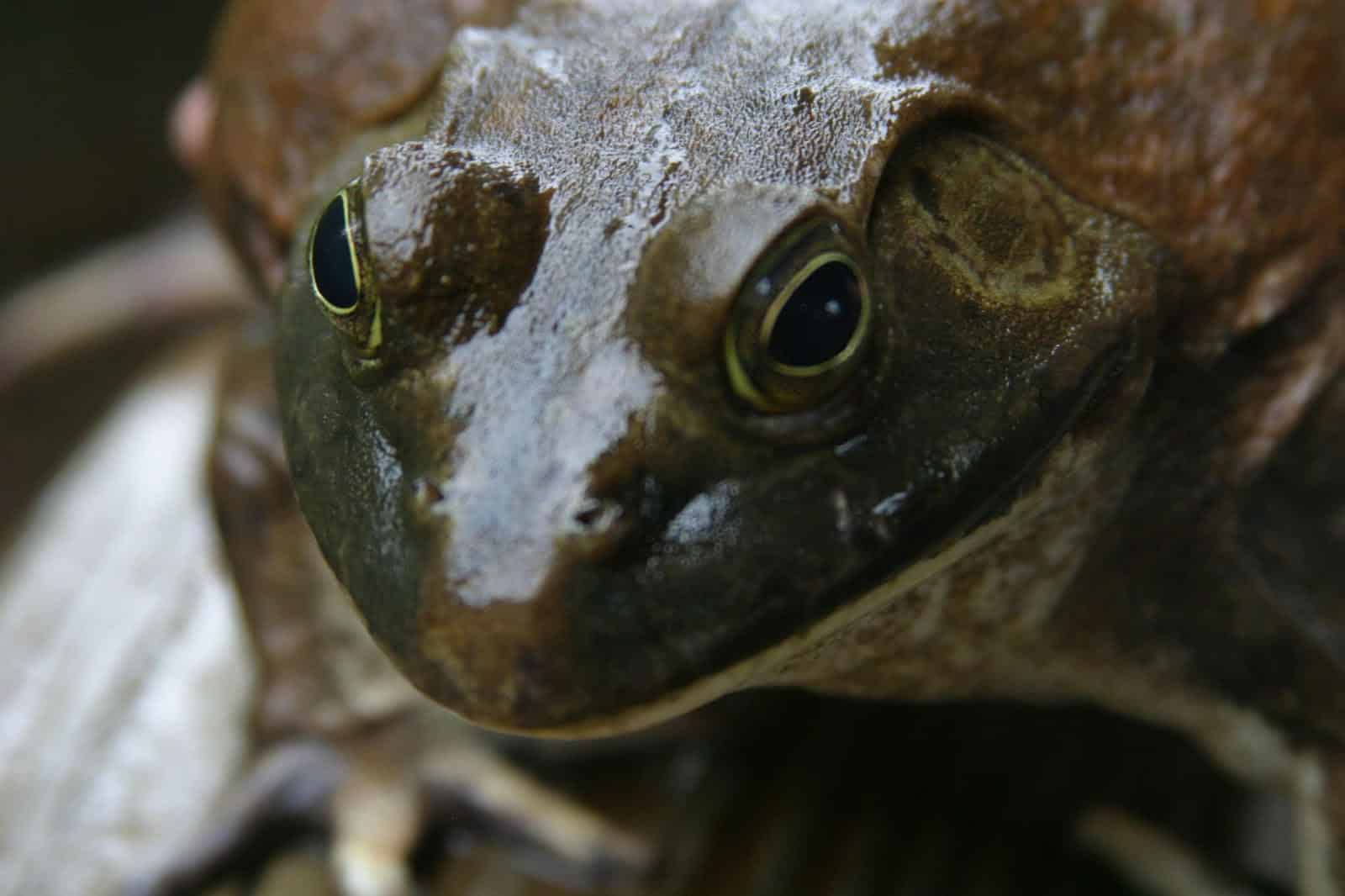Lake Wilhelmina reconstruction rolling along
ON 02-04-2025
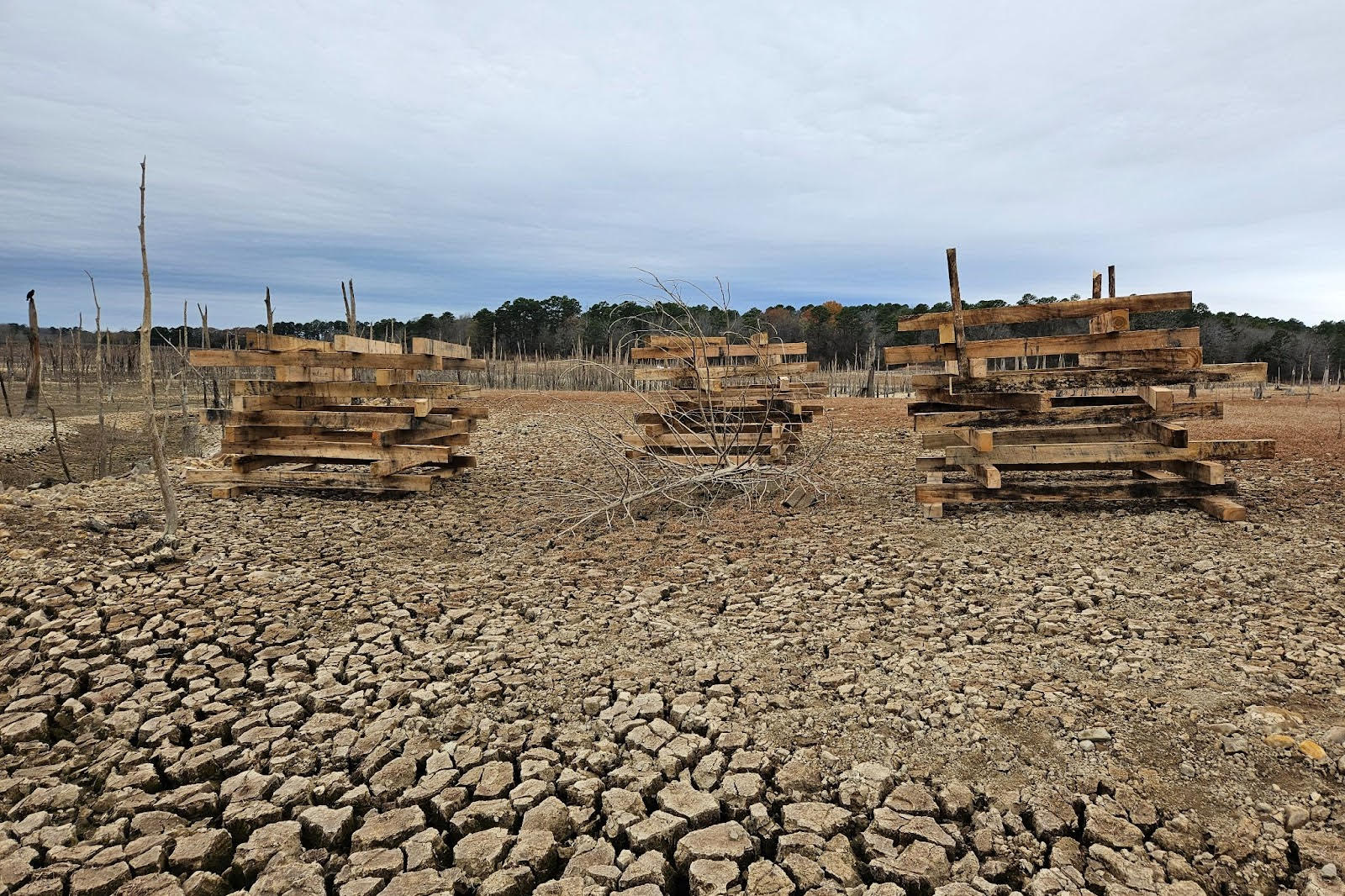
MENA — Recent rainfall may have slowed repair work at Lake Wilhelmina, but Arkansas Game and Fish Commission Regional Fisheries Supervisor Andy Yung is pleased with the progress the fisheries team has made in this aging reservoir. Biologists from across the state collaborated to place hundreds of artificial structures and stake beds in the 200-acre west Arkansas fishing hotspot during a large-scale habitat project last December.
“We factored rainfall into the original timeline of the project, so the rising water level wasn’t unforeseen,” Yung said. “Wilhelmina has a large watershed, and the combination of a 14-inch snow melt in January and a few rains have the lake back to full pool. It is small enough that the water should flow out quickly and not disrupt our original timeline for repairs.”
Wilhelmina is in the process of a major repair to the pipes that control the lake’s water level. Leaks in the main outflow pipe have formed between the water-control tower and the dam, causing the lake to slowly drain during summer.
“The problem was first identified in 2019, and we were able to place sandbags over the leaks in 2020 to offer a temporary solution,” Yung said. “Now that funding has been secured, we plan to resleeve the outflow pipe, eliminating the leak, but that requires a complete drawdown of the lake.”
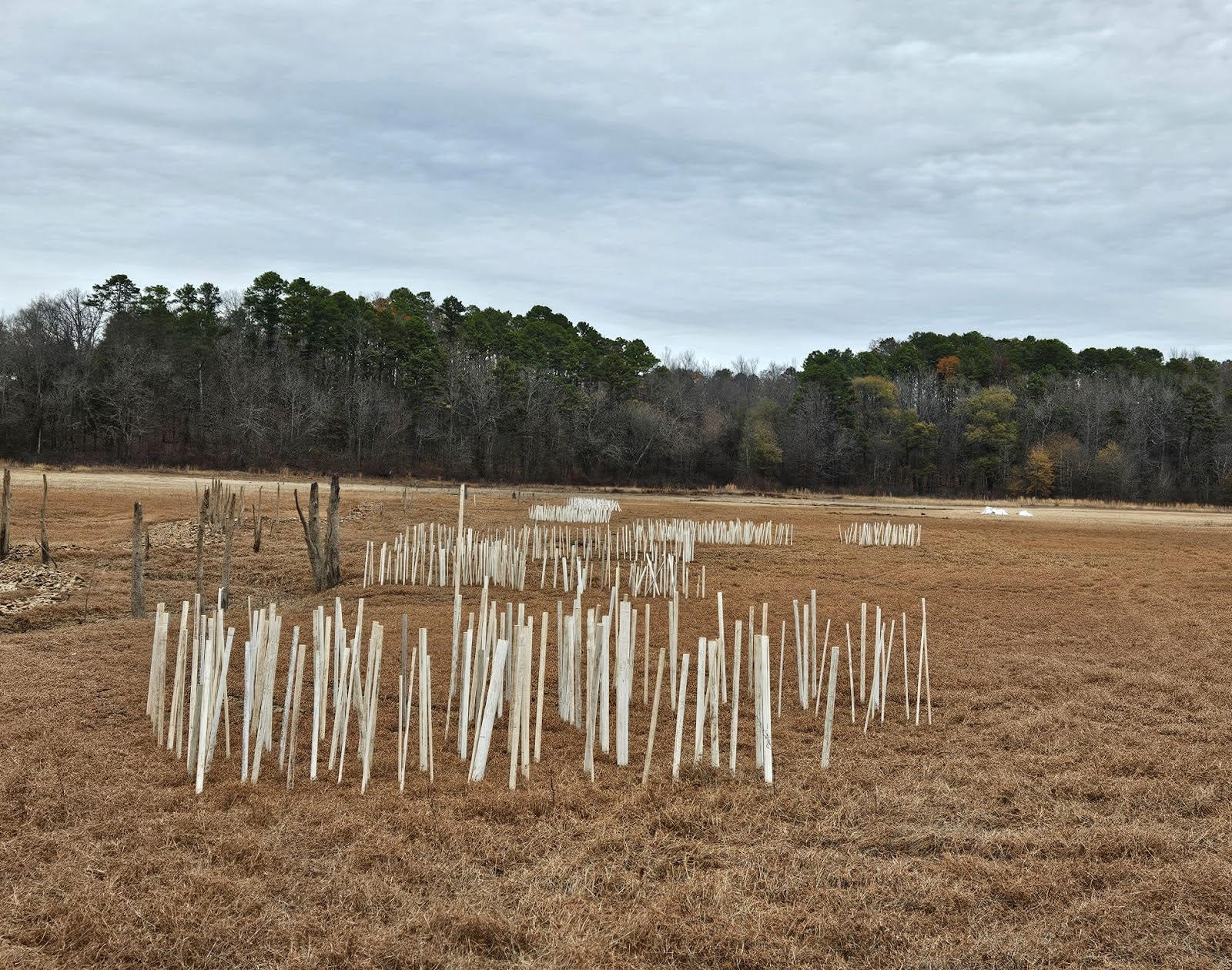
Lowering the water level caused some initial concern with biologists as the lake’s discharge flows into Powell Creek, which is home to a few rare and sensitive aquatic species, including the leopard darter. Although the lake is relatively small, it is deep enough to stratify into a layer of warm, oxygenated water and a bottom layer of colder water with little dissolved oxygen. As water from this lower portion of the water column was released, dissolved oxygen content in the creek downstream could decline, stressing the sensitive species.
“We installed a water-quality gauge downstream of the discharge pipe to keep an eye on dissolved oxygen as we drained the lake,” Yung said.” We also fitted a special cage over the discharge pipe that aerated the water as it passed through. The initial drawdown went very well and we had no incidents that caused any kills or undue stress to the species living in the creek during that initial drawdown.”
Yung says the lake level rises and falls with each rain and subsequent draining, but the risk of lowering oxygen content downstream has decreased significantly as cold weather and flowing water conditions do not allow stratification.
Lake Wilhelmina was the home of the latest state record black crappie, a 5-pound giant caught by an 11-year-old angler in 2011. Add the fact that Yung is a die-hard crappie angler and it was inevitable that AGFC staff would focus on adding fish habitat while waiting for repair work to be complete.
“We’ve placed a lot of artificial structures in the lake in the last two months,” Yung said. “We built 60 Georgia cubes using PVC and irrigation pipe in some of the deeper areas. On one large flat we stacked three to six cubes together to build an offshore reef where there had been virtually no cover for fish to use as shelter and ambush points.”
Crews also created more than 40 log cribs constructed of rough cut timbers.
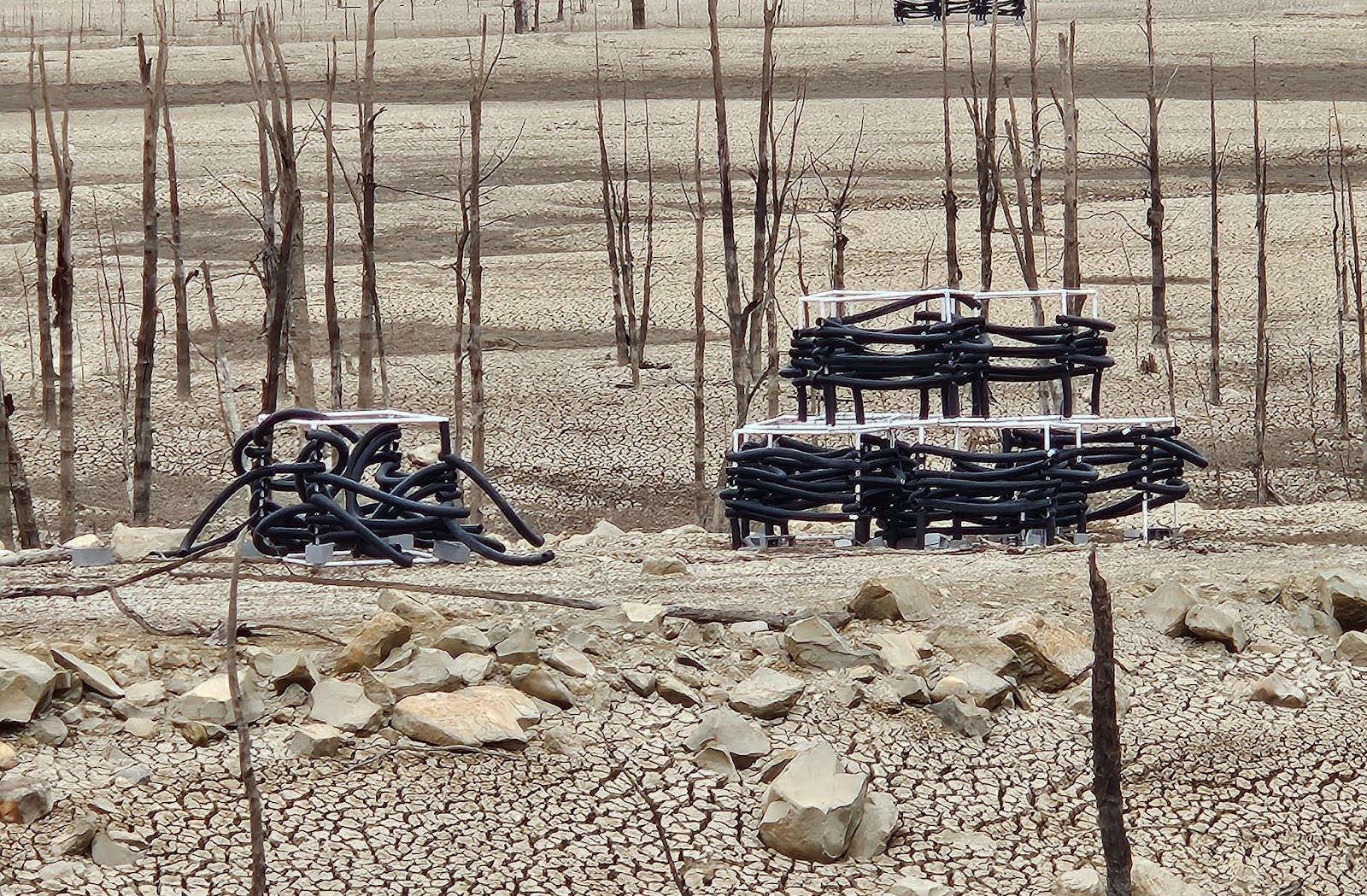
“These are like little log cabins of stacked four-by-sixes 8 feet wide by 8 feet long and about 6 feet tall,” Yung said. “We still have enough timbers to create 20 to 25 more cribs once the water drops again.”
Ask 100 crappie anglers their favorite way to add habitat to a lake and you’ll hear “stakebeds” at least 90 times. Crappie thrive in the vertical cover of a stakebed, and presenting a jig vertically among the slats of a well constructed bed is nearly snag-proof.
“We drove thousands of PVC stakes in the lake bottom to create dozens of stake beds that crappie and crappie anglers love,” Yung said. “The PVC should hold up much better than traditional wood or cane beds when the lake is drawn down in winter.”
The habitat enhancements didn’t end with fish attractors; biologists worked to rebuild some of the spawning habitat in the aging reservoir as well. Biologists anchored plastic culverts around the lake to enhance catfish spawning habitat, and pea gravel spawning beds were constructed to increase bedding habitat for bluegill, redear and other sunfish species.
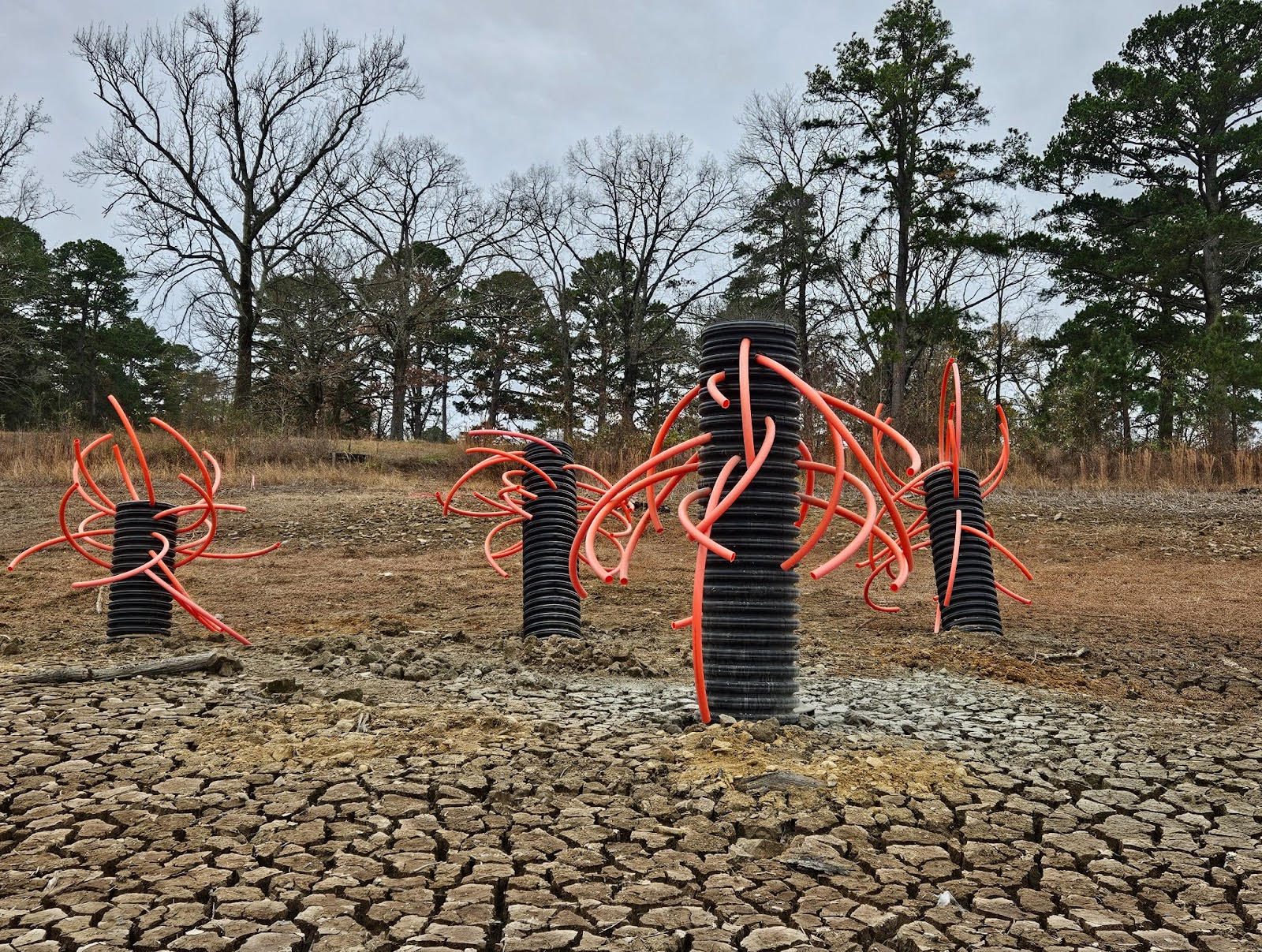
“We placed pea gravel for 19 spawning beds around the lake and hope to frame out those areas with wooden borders once the water level allows us to get back out there,” Yung said. “Some of these spawning areas are away from the shoreline, but a lot of that work is within reach of bank anglers so they can enjoy better fishing without the need for a boat. Bank anglers always make up a good portion of our angling community and we want to serve them as well as the boat anglers.”
Dylan Hann, Fisheries Supervisor at the AGFC’s Hope Regional Office, also flew a drone over the entire lake, mapping out elevations to create a contour map that anglers will be able to view online once the lake renovation is complete.
“I’m sure a lot of anglers will be excited about that map once the water is back,” Yung said. “Design reviews on the project are being reviewed now, and once we get the water back off the pipe, our contractors should be able to complete the repair on time. As long as weather conditions are favorable, we still hope to have the repair complete and the gates to the lake shut by the end of summer. We’ll build additional brushpiles with natural cover to add even more habitat as the lake refills.”
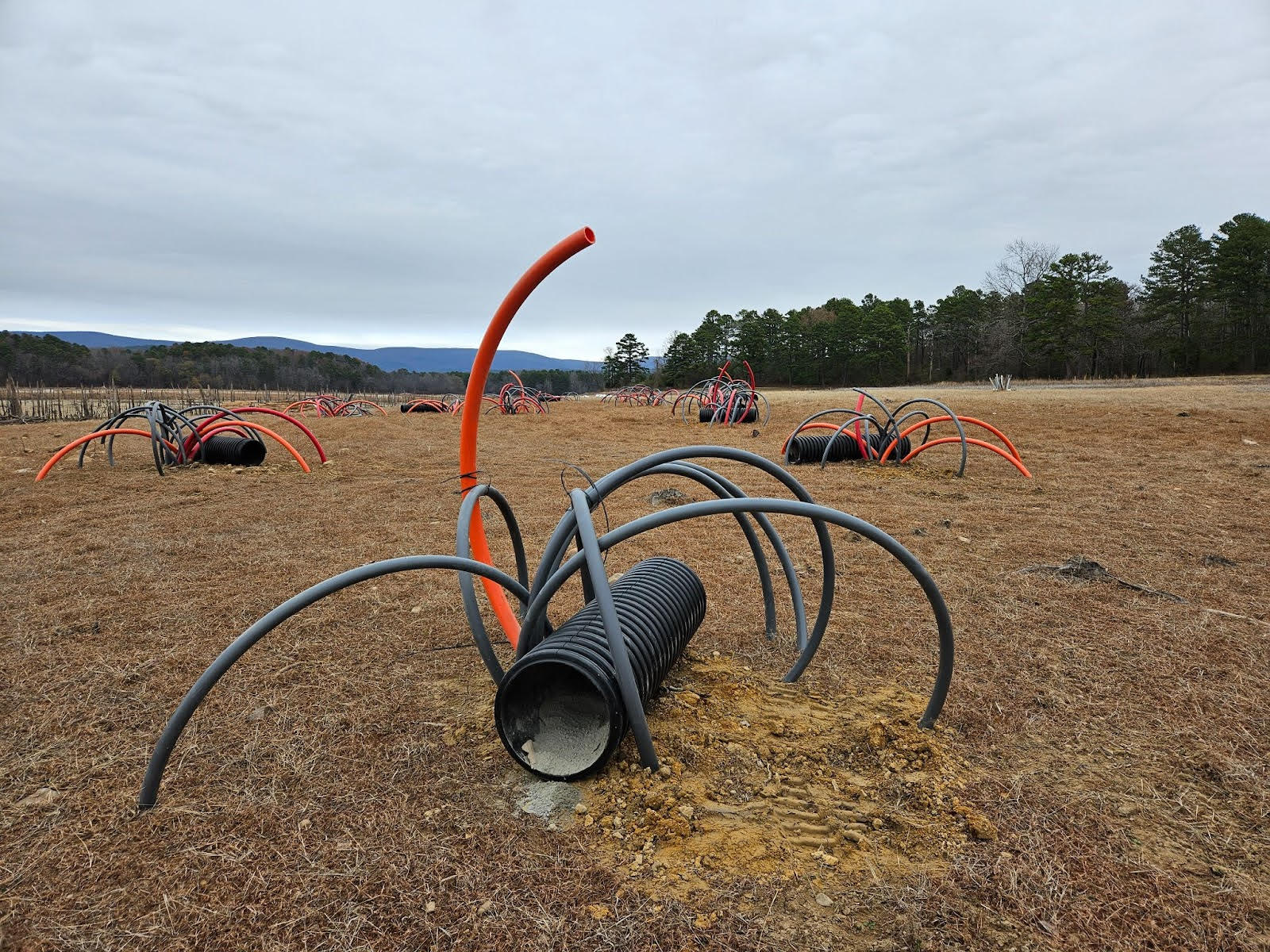
Yung says a handful of structures shifted from their original placement when the water level quickly rose, but the staff have plans to address those bits of habitat that went rogue.
“The machine we use to anchor the structures broke down as we were completing phase one, so a few of the structures floated free, but as soon as the water level drops again, we’ll be back to replant them and secure them even more,” Yung said. “It’s just one of those joys of working with Mother Nature.”
The Lake Wilhelmina renovation is expected to cost roughly $1.4 million, with $1 million of that coming from a special transfer from the Restricted Reserve Fund Game and Fish Grants Set-Aside authorized by the Arkansas General Assembly in 2023. The authorization of this money was critical in moving forward with the project.
####
CUTLINES:
LOG CRIBS
AGFC staff constructed dozens of structures using rough-cut timbers to create cover for baitfish and ambush locations for predatory fish. AGFC photo courtesy of Andy Yung.
STAKEBEDS
Simple PVC driven into the lakebed offers vertical cover crappie and bream prefer. AGFC photo courtesy of Andy Yung.
STACKED CUBES
Biologists stacked Georgia cubes to create artificial reefs on some of Lake Wilhelmina’s flats to add cover at various depths for fish. AGFC photo courtesy of Andy Yung.
TUBE DUDES
Modified “trees” created using plastic culverts and PVC conduit offer complex cover for gamefish. AGFC photo courtesy of Andy Yung.
CULVERT
Laid on their sides, the same plastic culverts used in the “tube dudes” create spawning habitat for catfish. AGFC photo courtesy of Andy Yung.
Recent News
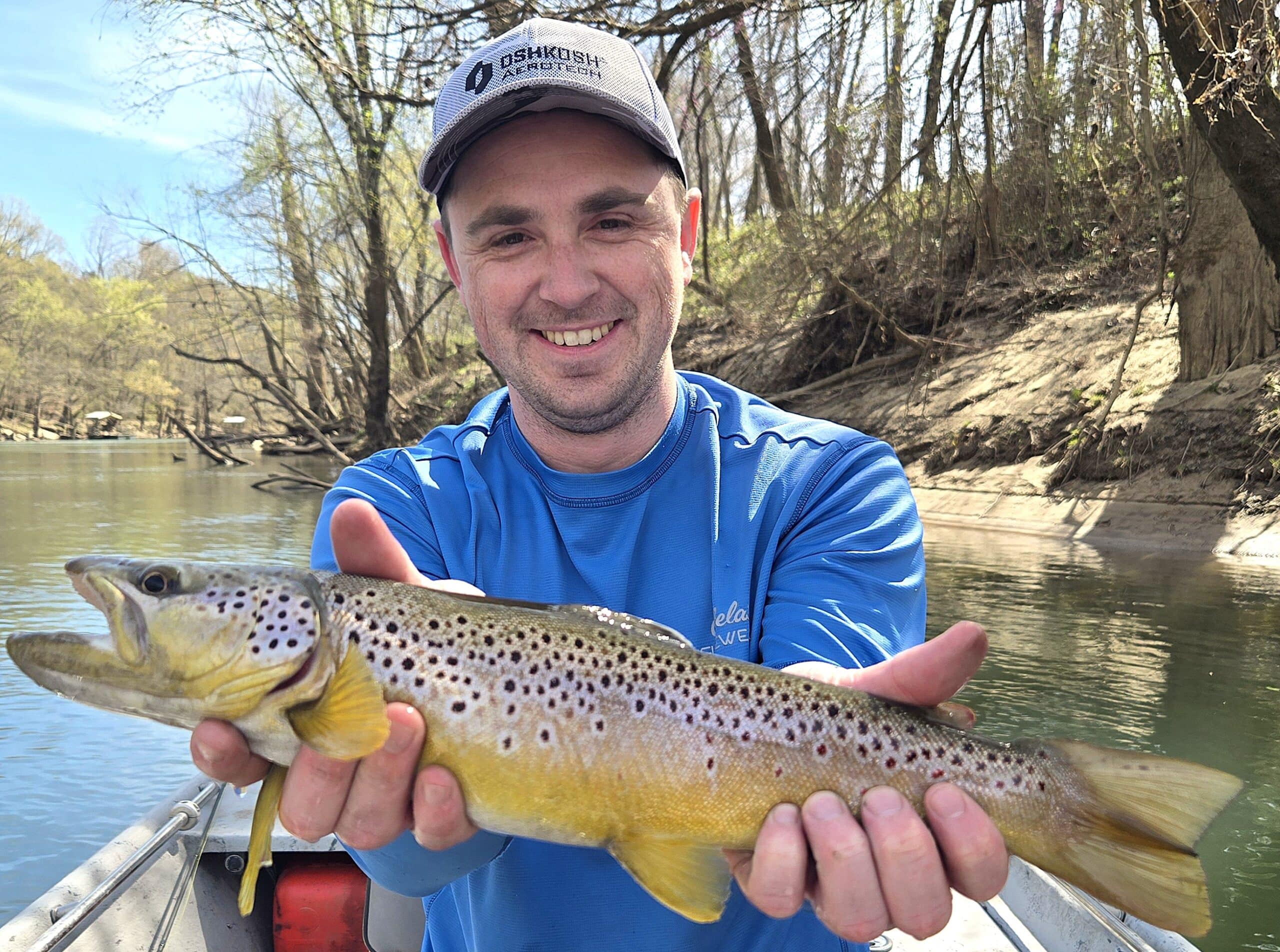
Arkansas Wildlife Weekly Fishing Report
Apr. 10, 2025
Subscribe to Our Weekly Newsletter E-mails
Don’t miss another issue. Sign up now to receive the AGFC Wildlife Weekly Newsletter in your mailbox every Wednesday afternoon (Waterfowl Reports are published weekly during waterfowl season and periodically outside the season). Fishing Reports arrive on Thursdays. Fill in the following fields and hit submit. Thanks, and welcome!

